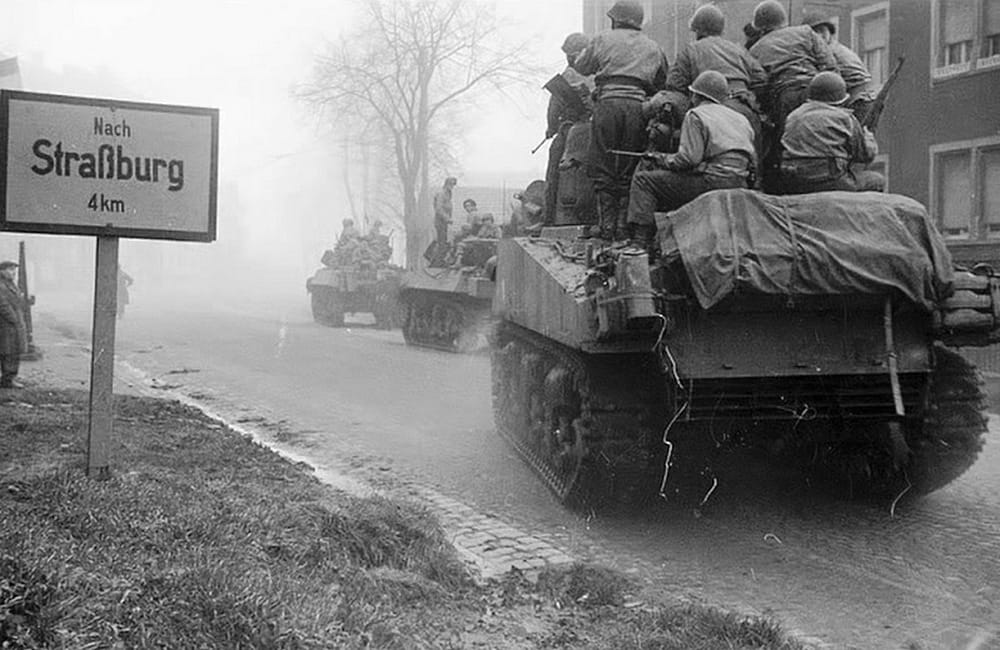On 23 November 1944, after years of occupation, Strasbourg was finally liberated by French troops under General Leclerc. This year, the city is celebrating the 80th anniversary of this historic event with exhibitions, screenings, and ceremonies that you won’t want to miss. Here’s a guide to the key moments of the commemorations. But before we dive into the details, let’s take a quick journey back 80 years.
A brief history: Strasbourg’s liberation on 23 November 1944
23 November 1944 is a date deeply ingrained in the memory of Strasbourg. After five long years of German occupation, the city was finally freed by the courageous efforts of the French 2nd Armoured Division (2e Division Blindée), led by General Leclerc. But this liberation was more than just a military victory—it was the fulfilment of a promise made by Leclerc to his men in the Libyan desert in March 1941: they swore to keep fighting until the French flag once again flew atop Strasbourg Cathedral.
Three years later, after liberating Paris in August 1944, Leclerc’s men set their sights on Strasbourg. On 23 November 1944, Leclerc launched the assault at 7:15 in the morning. Just three hours later, the cathedral came into view. Spahi Maurice Lebrun, one of the men present at the famous Koufra oath, took the initiative to “plant a flag up there.” After gathering a white bedsheet, a blue skirt, and a red strip from a Nazi banner, a makeshift French tricolour was created. Lebrun and his comrades scaled the cathedral, and at 145 metres high, he fastened the flag to the spire. Under the watchful eyes of General Leclerc, the French flag—marked with the Cross of Lorraine—finally flew over the city, honouring the Koufra oath. Leclerc, visibly moved, reportedly said to his aide: “Now, my dear Louis, we can die.”
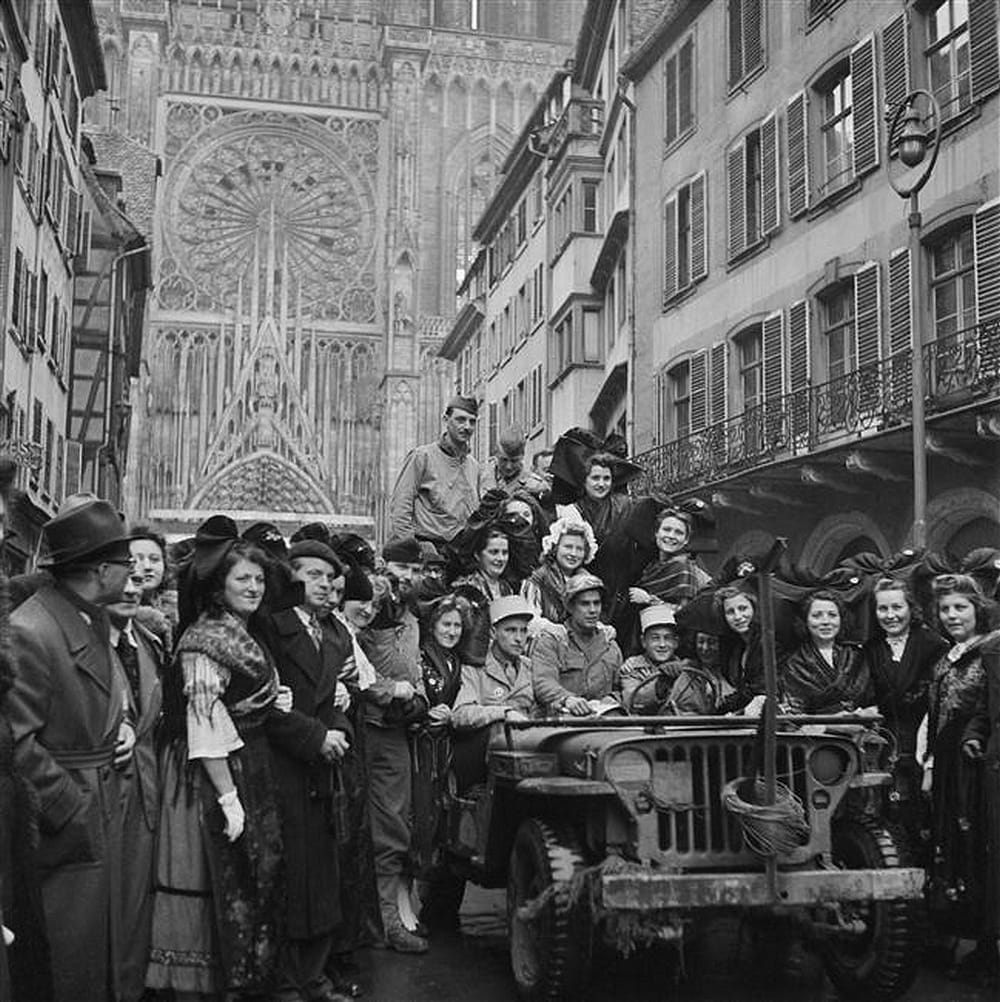
Strasbourg’s liberation marked the end of German occupation but also the realisation of a promise that had fuelled hope during the darkest days of the war. This moment was especially significant for Alsace, as Strasbourg had been annexed by Germany in 1870, and its return to France after World War II was a powerful symbol of freedom.
Liberation commemoration programme (continuously updated)
During your stay in Strasbourg in November, you can enjoy a wide range of events celebrating the 80th anniversary of the liberation. Here is an overview of the main events planned.
Strasbourg Liberation Ceremony
The ceremony to mark the liberation of Strasbourg will take place on Saturday 23 November at 11.15am in the Place Broglie. On the programme: a tribute to the 2nd armoured division and to Marshal Leclerc, and an artistic presentation on the Koufra oath, all broadcast in the Aula Marc Bloch.
Raising the French flag over the cathedral
Every year, the French flag is raised to the top of the spire of Strasbourg cathedral in memory of the liberation of Strasbourg. This year, it will be raised by a Frenchman and a German as part of the ceremony. You can follow the hoisting live in the Aula Marc Bloch and from the Place Broglie.
The Liberation Ball
A free festive evening will be held at the Salle de la Bourse on 23 November from 8pm to midnight. On the programme: music and dancing to the tunes of Swing, Charleston, Lindy Hop... And for the dress code: come dressed as if you were in the 40s. But don't forget to register.
Exhibition at the Historical Museum of Strasbourg
From 15 October 2024 to 12 January 2025, immerse yourself in the history of the city’s liberation, featuring authentic objects from the period, including the flag flown from the cathedral spire on 23 November 1944. Free entry on 23 and 24 November.
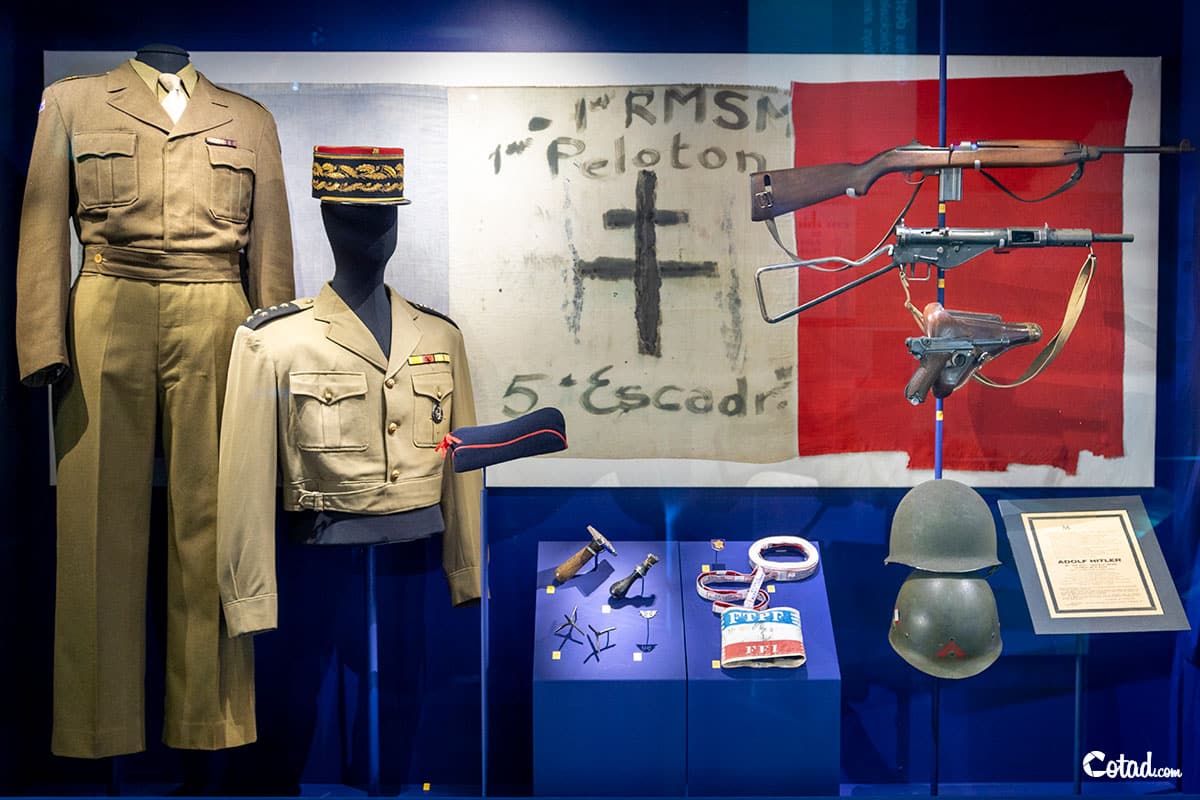
Exhibition "Guy Hoareau: The Journey of an Overseas Soldier" at the Strasbourg Archives
From 15 November 2024 to 15 January 2025, discover the incredible story of Guy Hoareau, a soldier from Réunion who played a key role in Strasbourg’s liberation. Through documents and illustrations, this exhibition sheds light on the contributions of soldiers from France’s overseas territories.
Other events are currently in preparation, including historical re-enactments, official ceremonies, and conferences. Find the full official programme here (in French).
Sites of memory and museums to explore World War II history
In addition to the commemorations, Strasbourg and Alsace offer many memorial sites and museums where you can dive deeper into the history of World War II. Here are some must-visit places during your stay.
The "Cherbourg" Sherman Tank in Strasbourg
Located near the Port du Rhin tram stop, this Sherman tank is a powerful reminder of the fierce fighting for Strasbourg’s liberation. It honours Maréchal des logis Albert Zimmer, a native of La Wantzenau, who was killed during the battle at the Kehl Bridge on 23 November 1944. This site serves as a poignant memorial to those who fought for freedom.
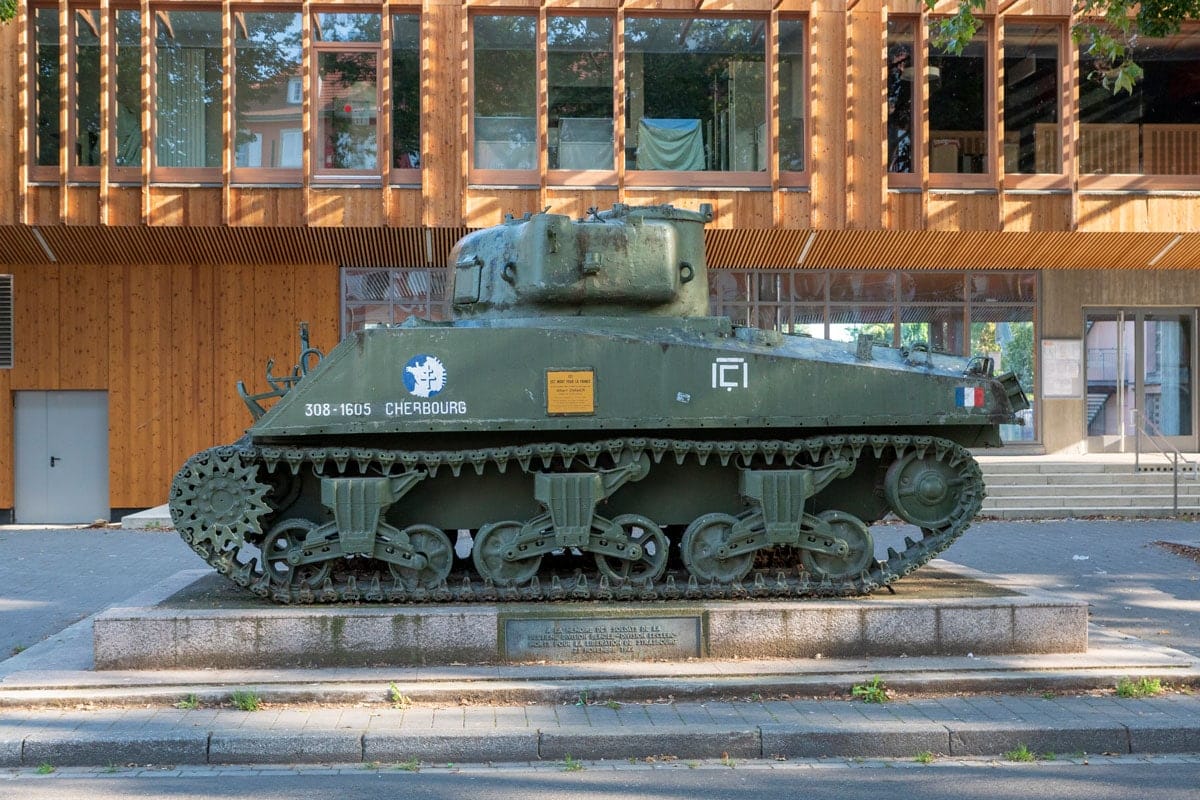
MM Park in La Wantzenau
Just north of Strasbourg, the MM Park is an impressive military museum dedicated to World War II. Its extensive collection includes military vehicles, weapons, uniforms, and more. The museum also features re-enactments of wartime scenes, and even offers a treetop adventure course for a unique experience. MM Park provides a comprehensive look at military history and the strategic challenges of the time.
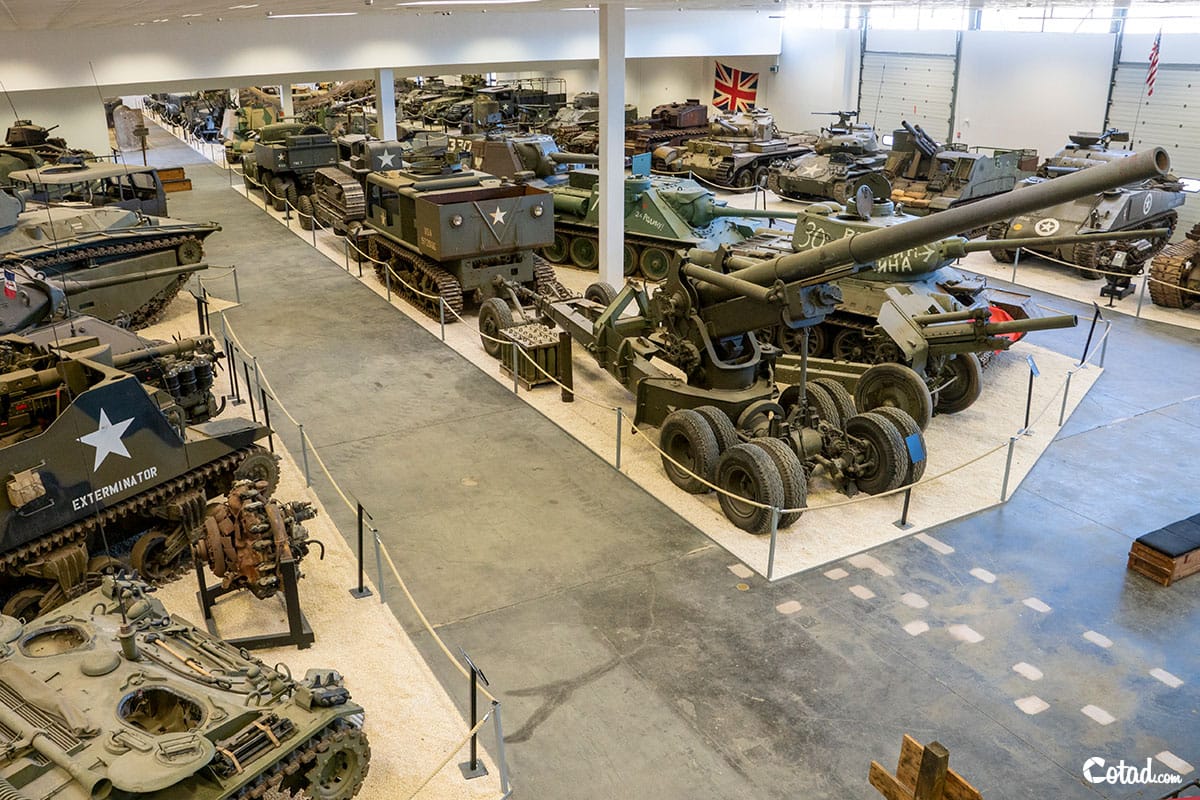
The Struthof - European Centre for Deported Resistance Members
About an hour from Strasbourg, Struthof is an essential stop for anyone seeking to understand the horrors of Nazi occupation in Alsace. The former Natzweiler-Struthof concentration camp is now a memorial dedicated to deported resistance members. As the only concentration camp on French soil, it was a site of immense suffering for thousands of prisoners. The memorial provides a moving and educational journey through this tragic chapter of history.
Fort Schoenenbourg and the Maginot Line
Located about an hour north of Strasbourg, Fort Schoenenbourg is one of the largest fortifications along the Maginot Line, built to protect France from German invasion before World War II. The fort is now open to the public, offering an immersive experience of life for the soldiers who manned these defences. Visitors can explore the underground tunnels, artillery rooms, and living quarters that have been meticulously preserved.

